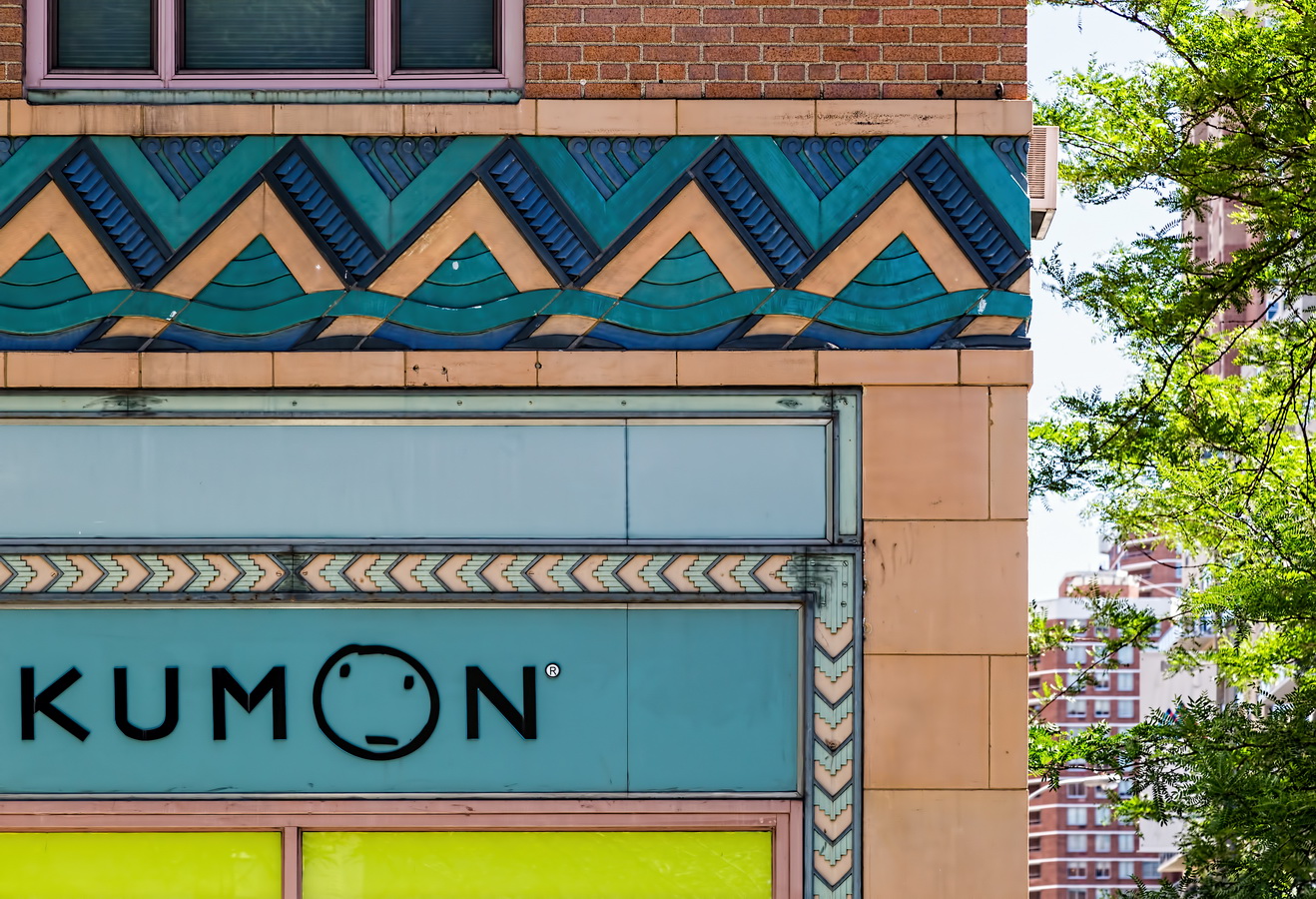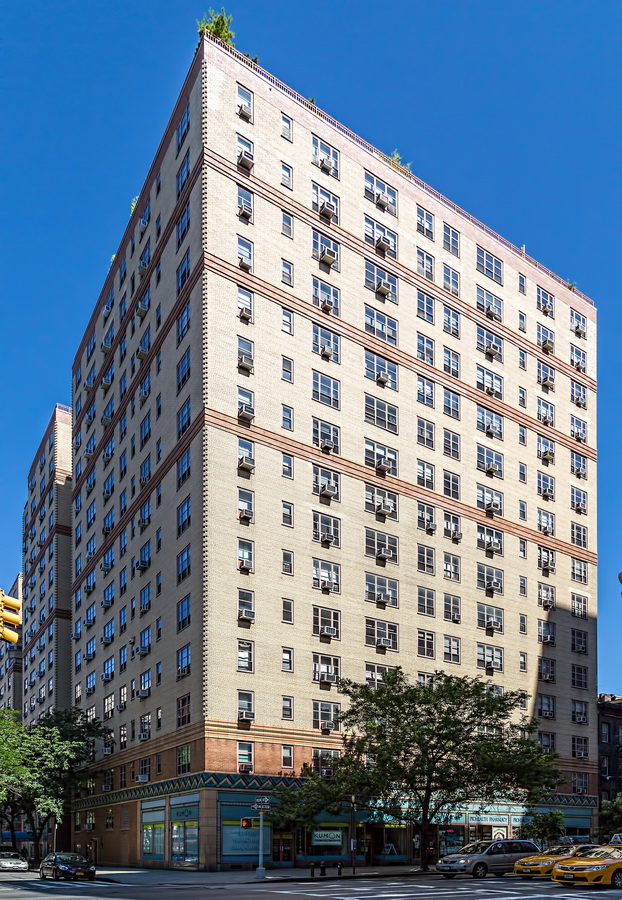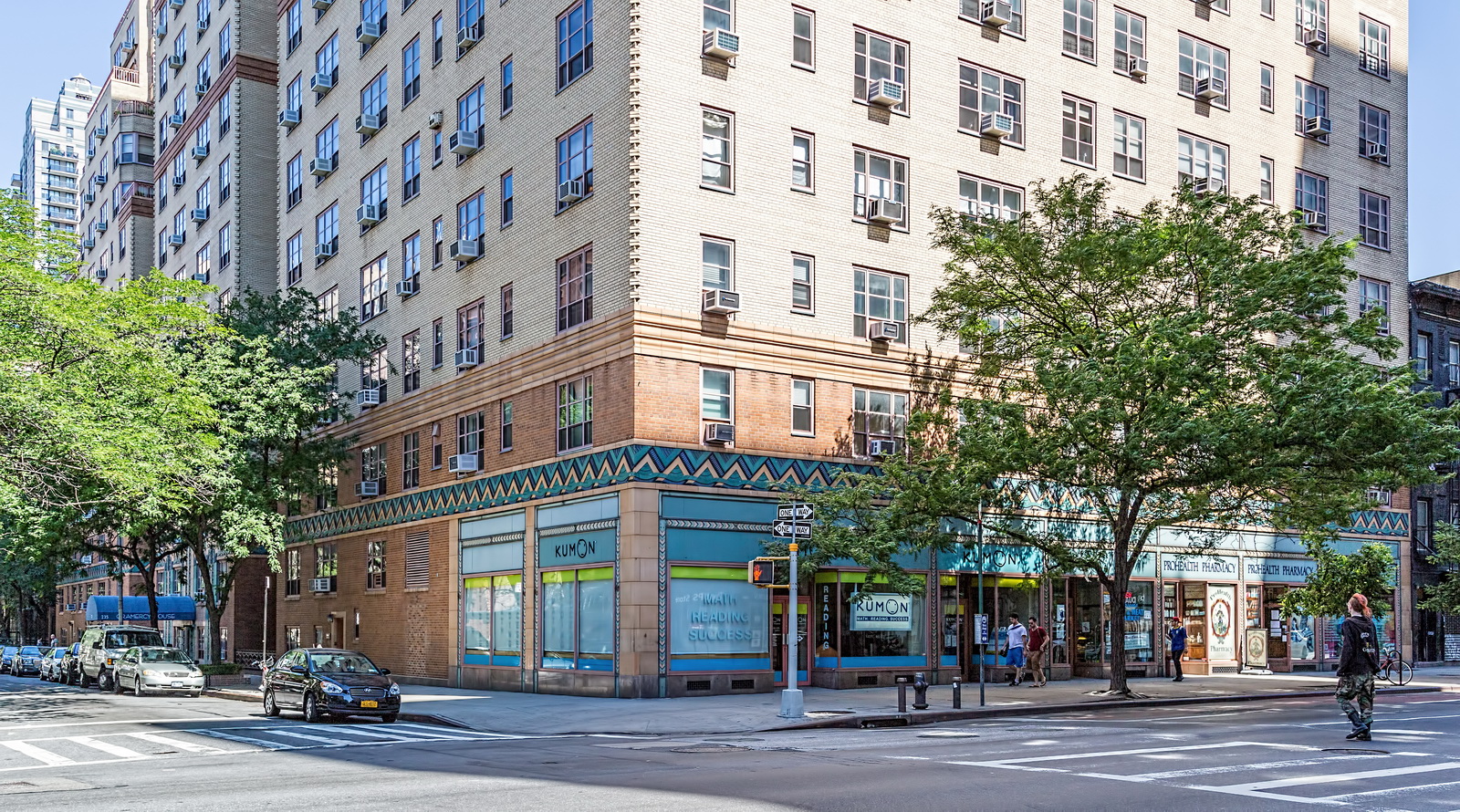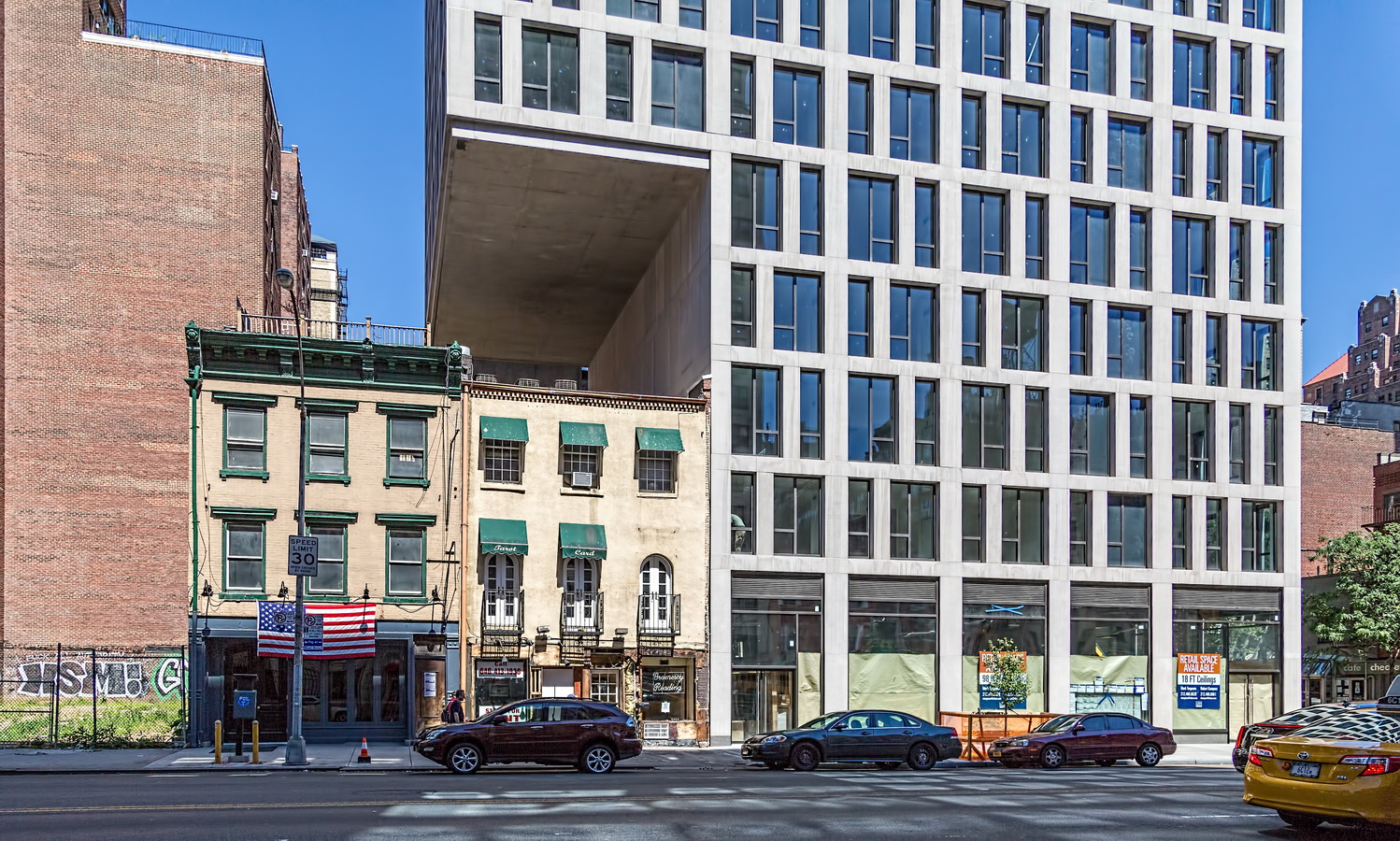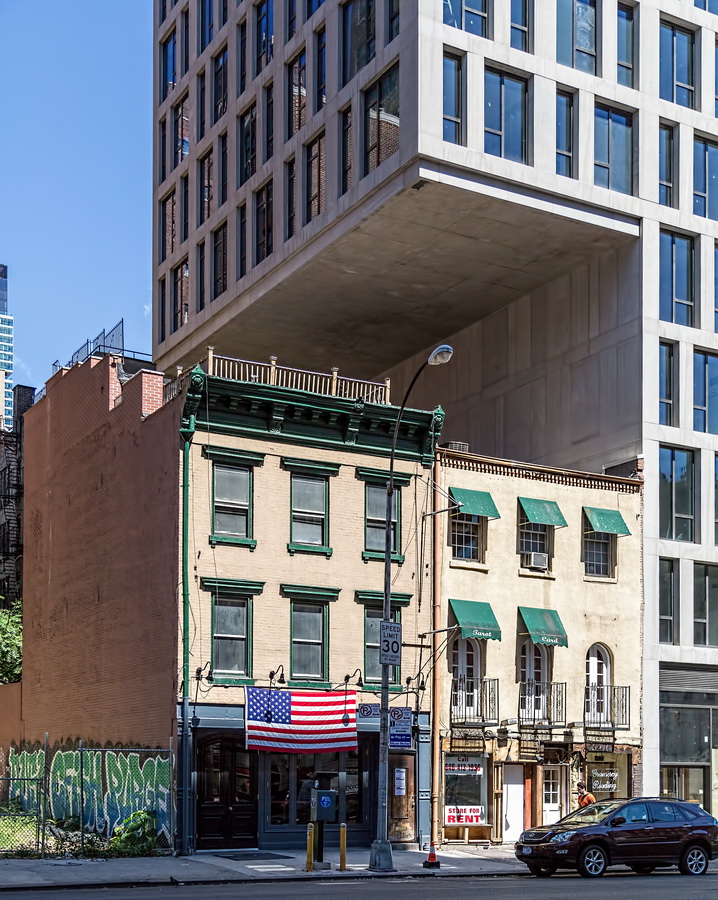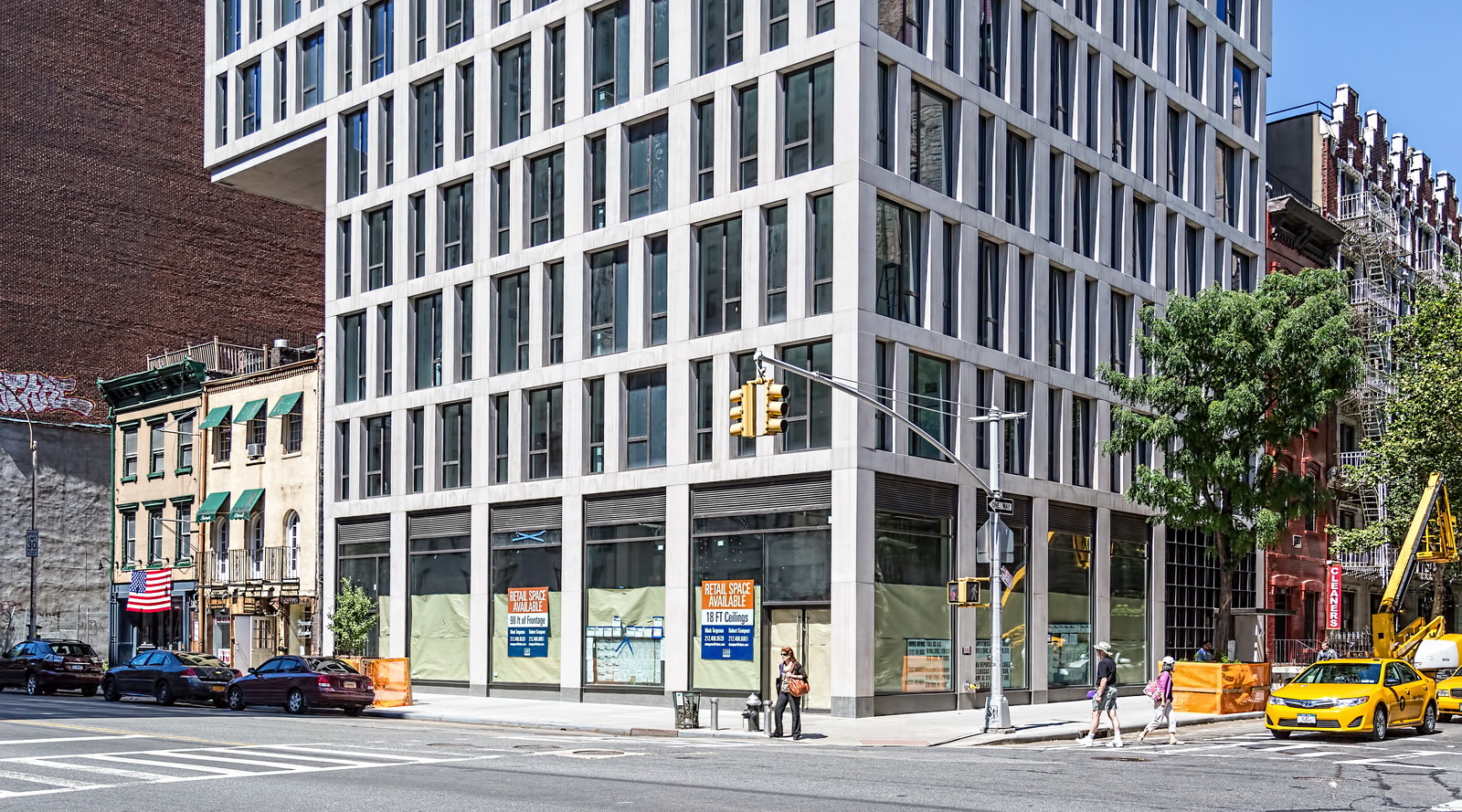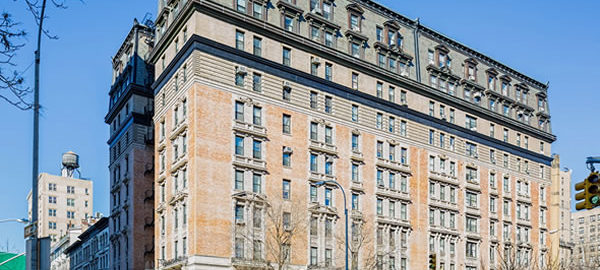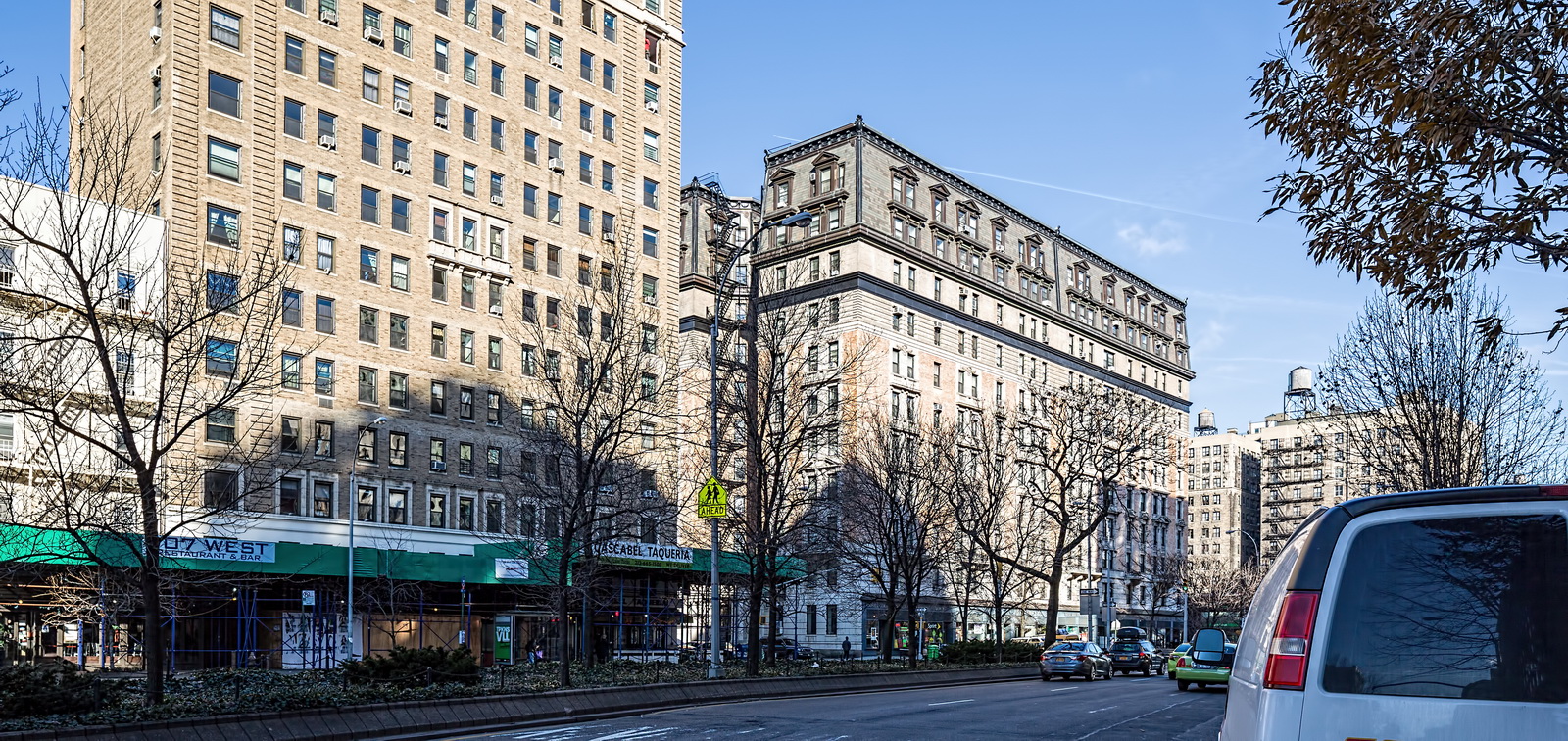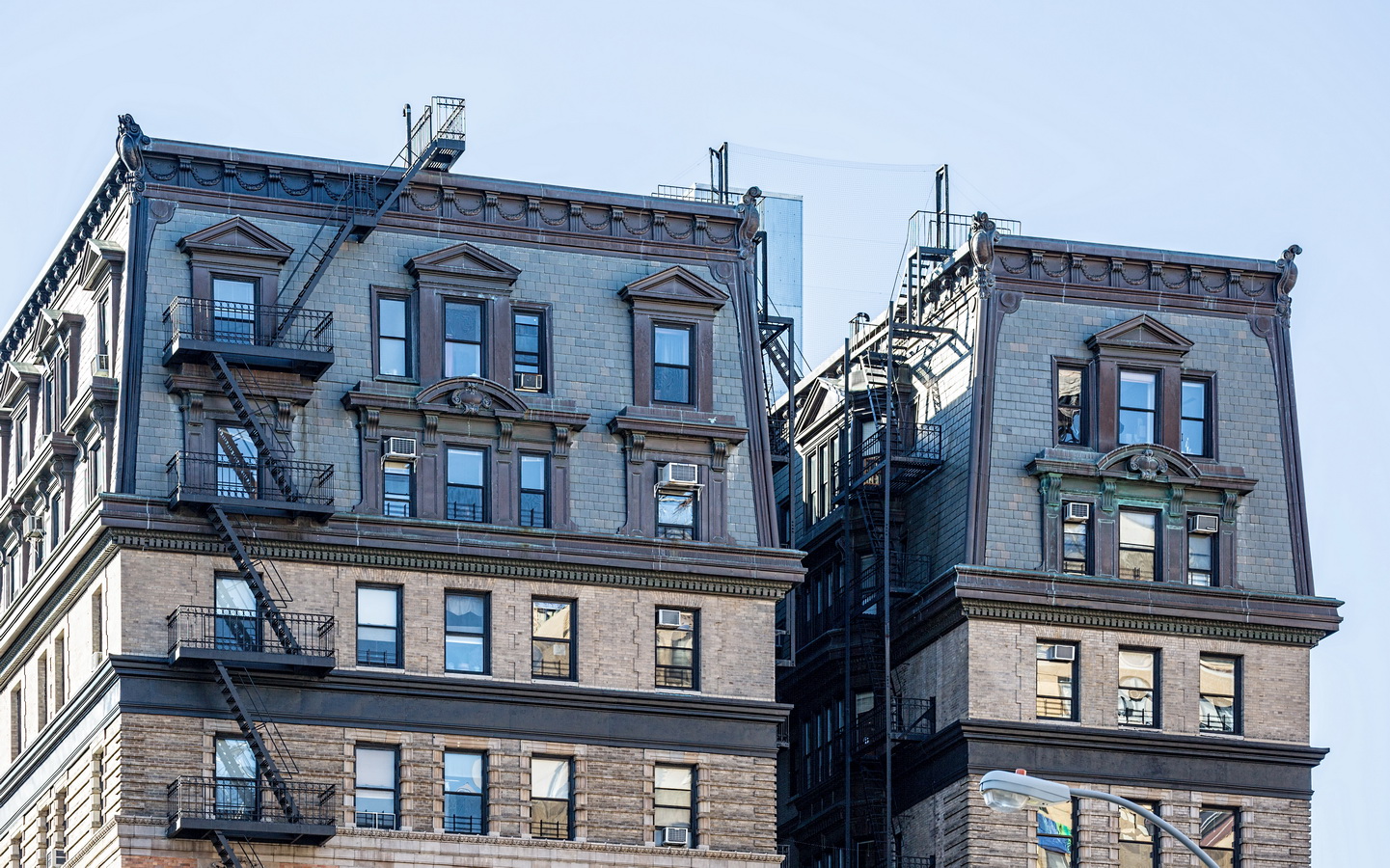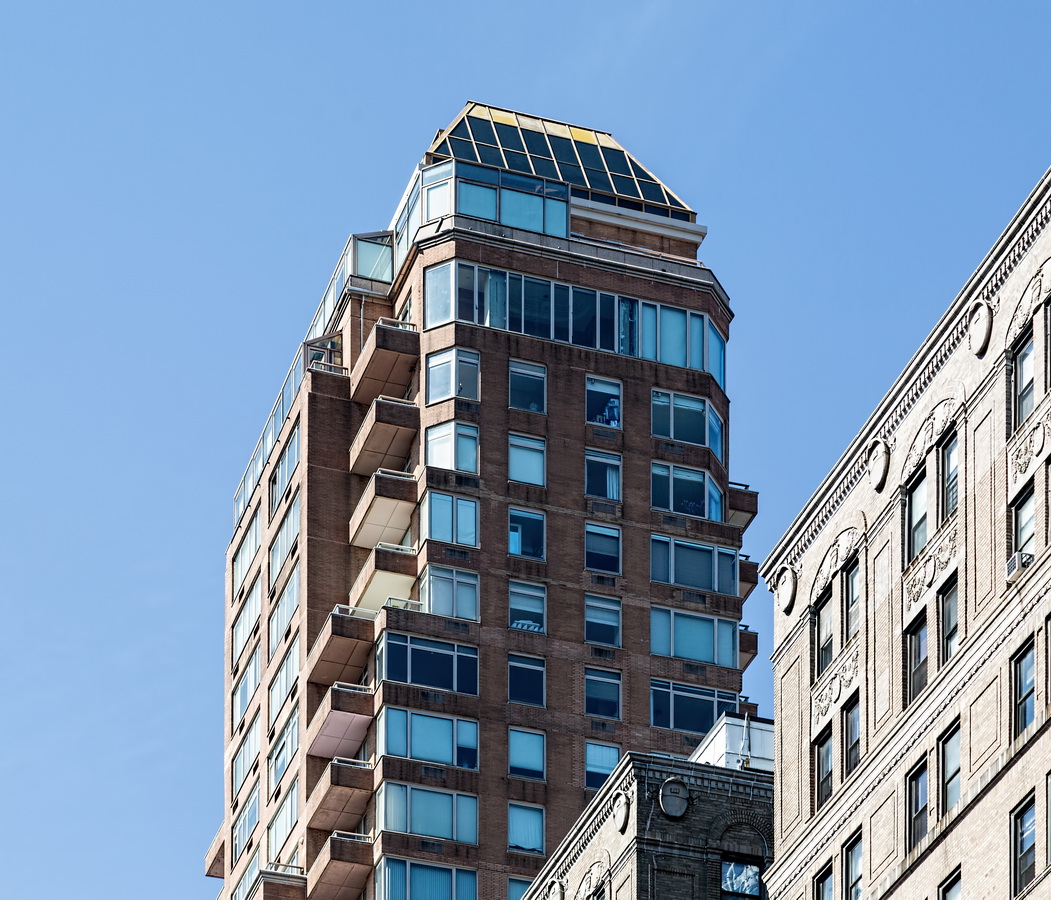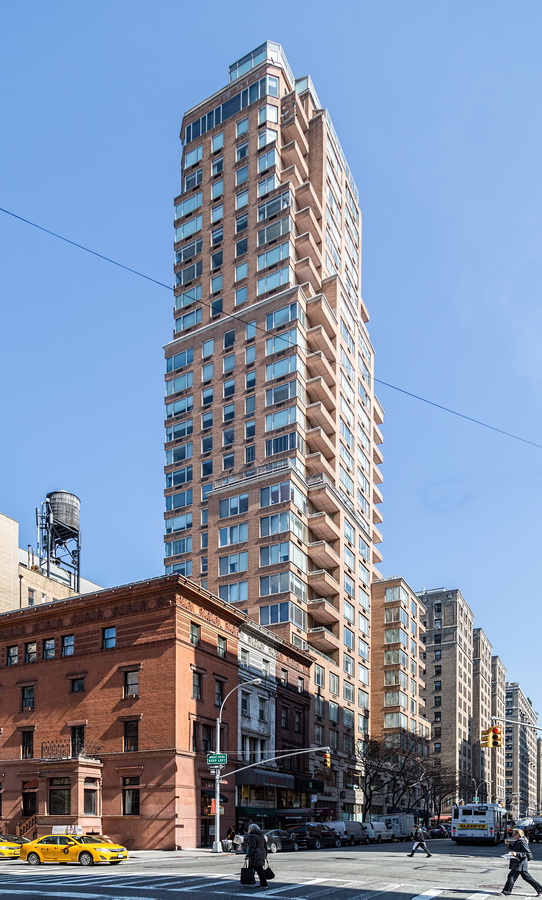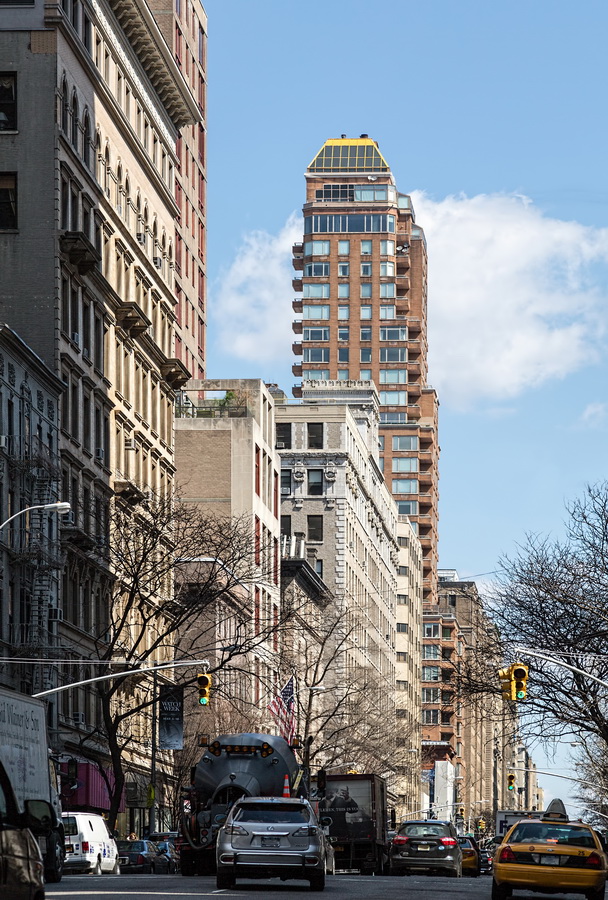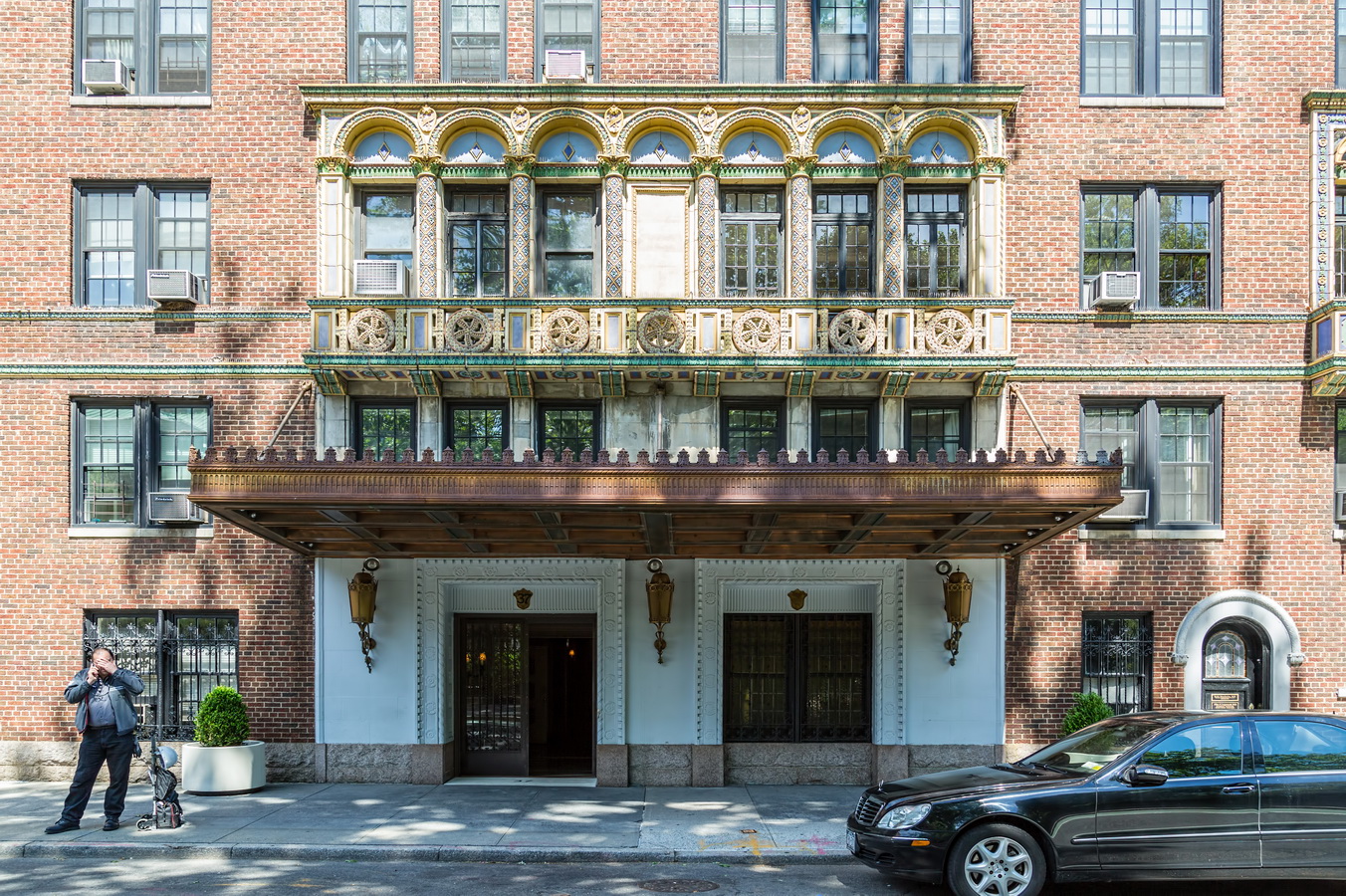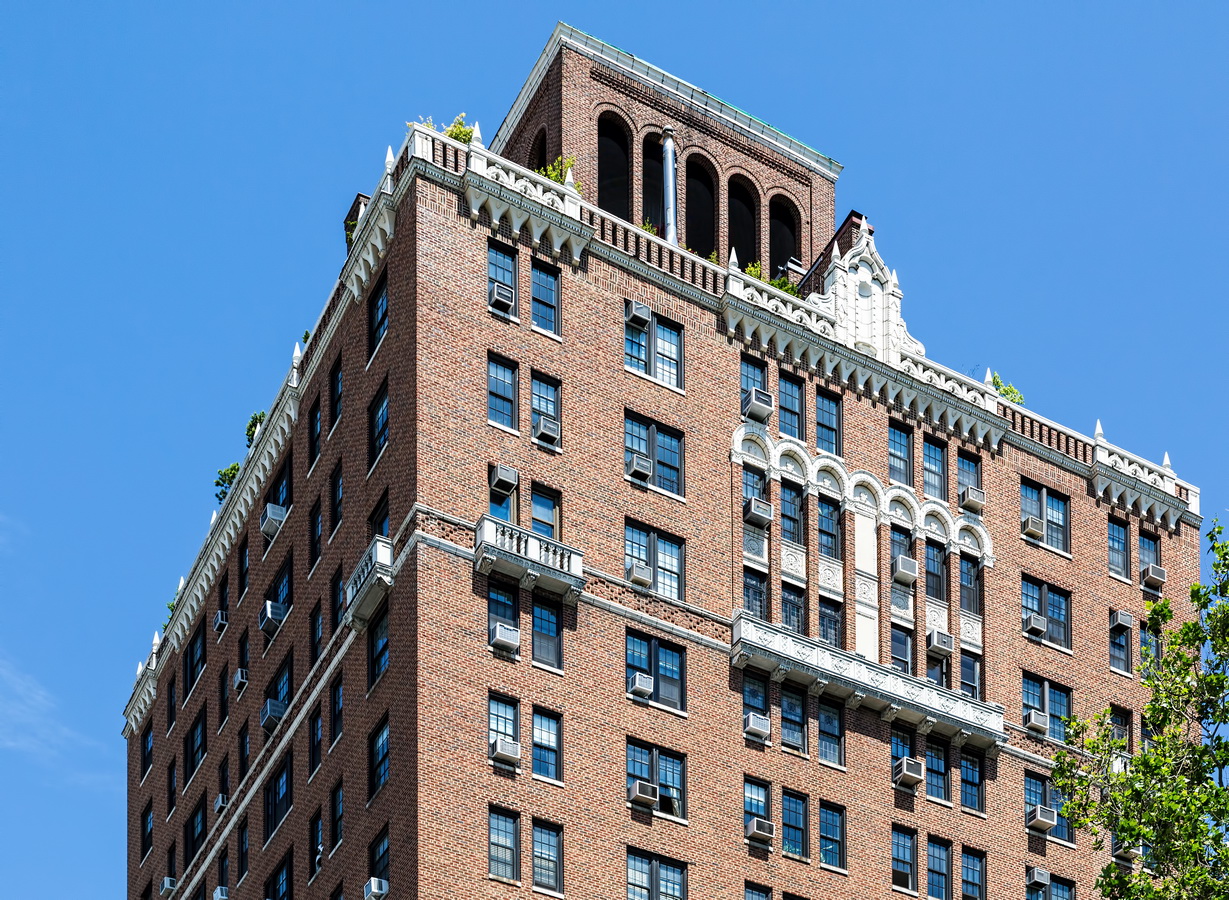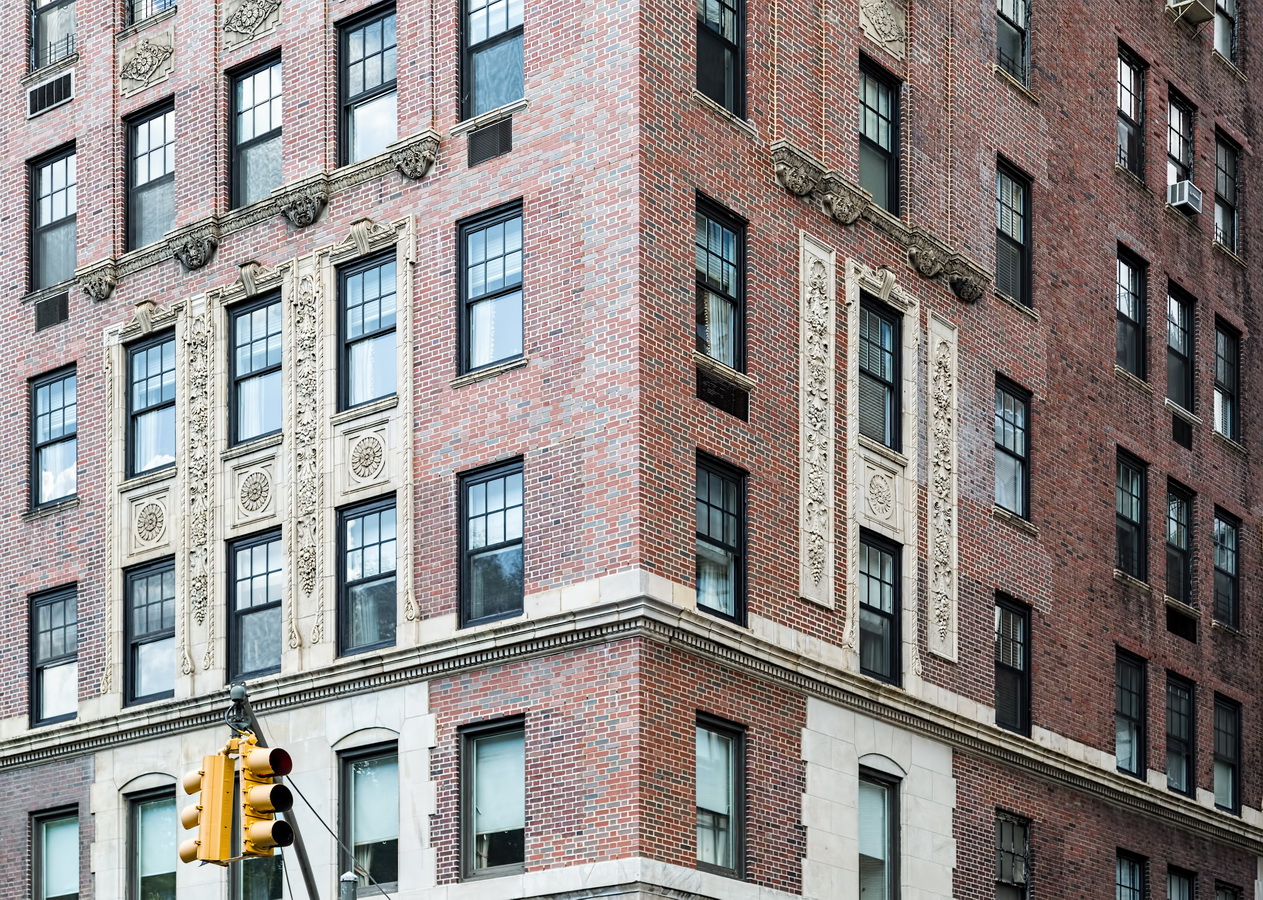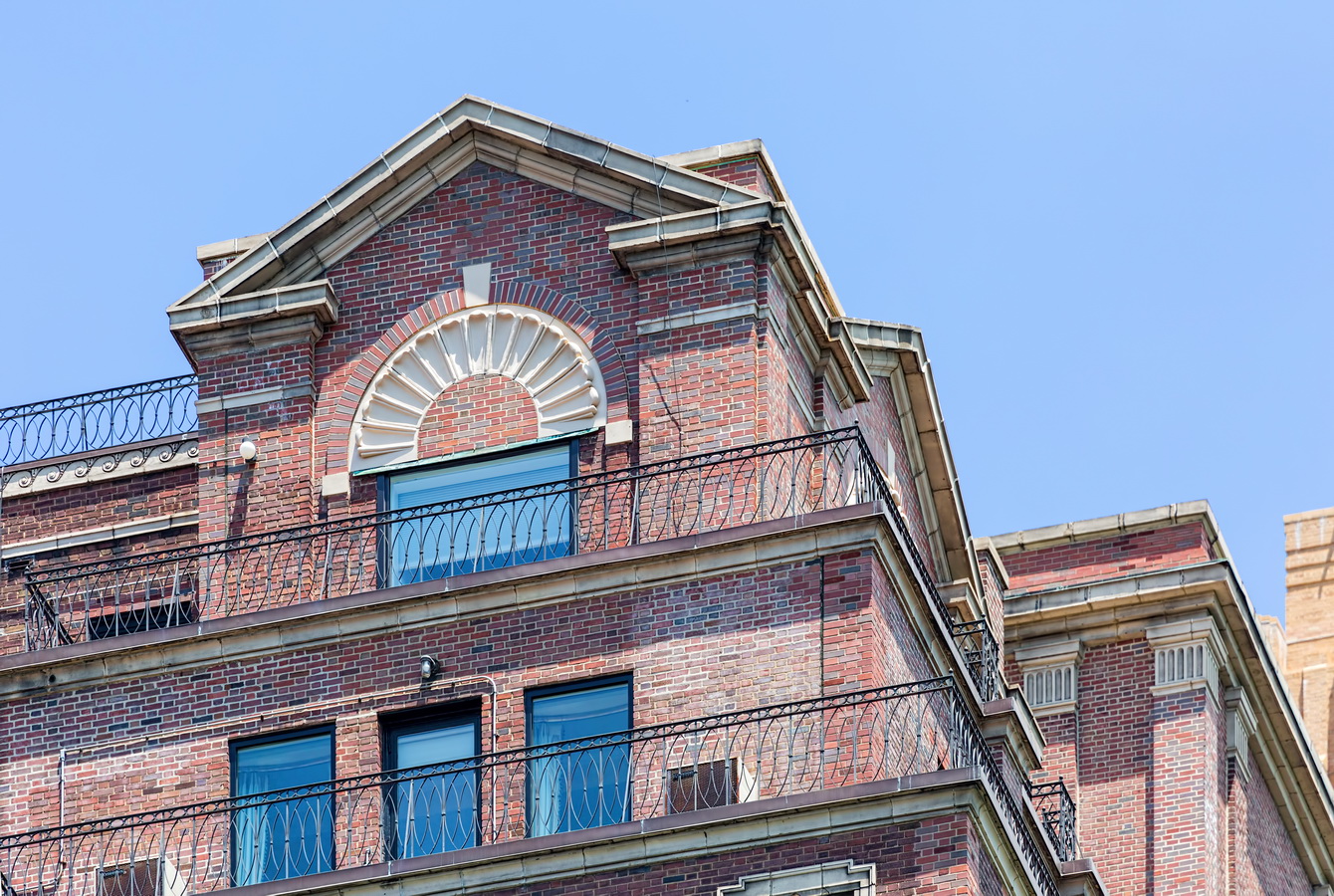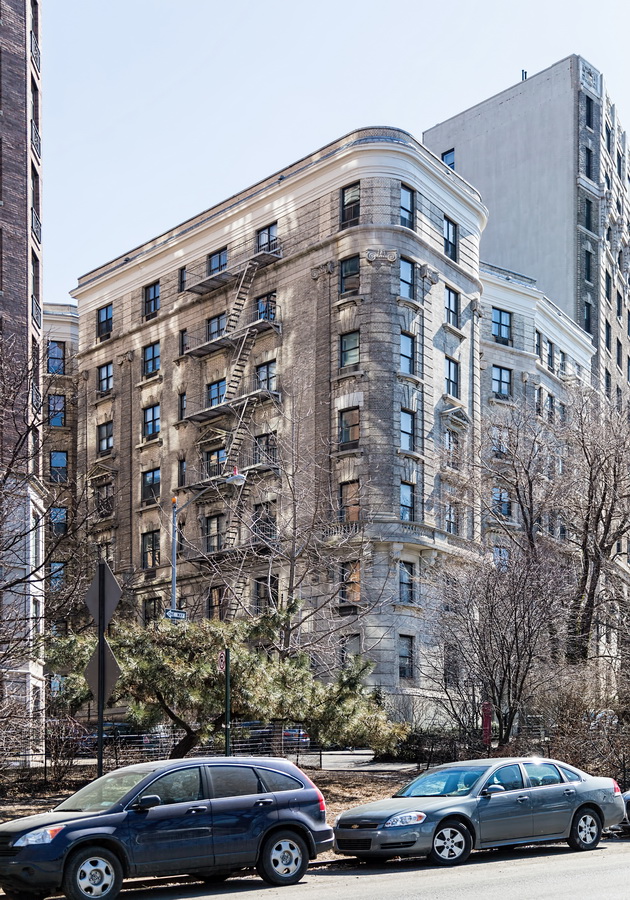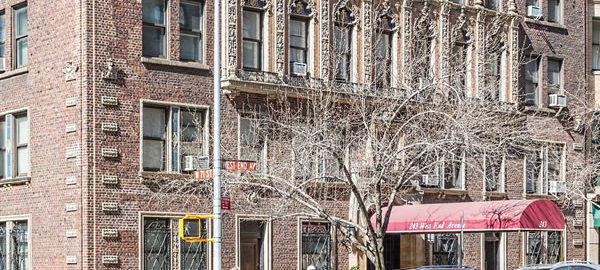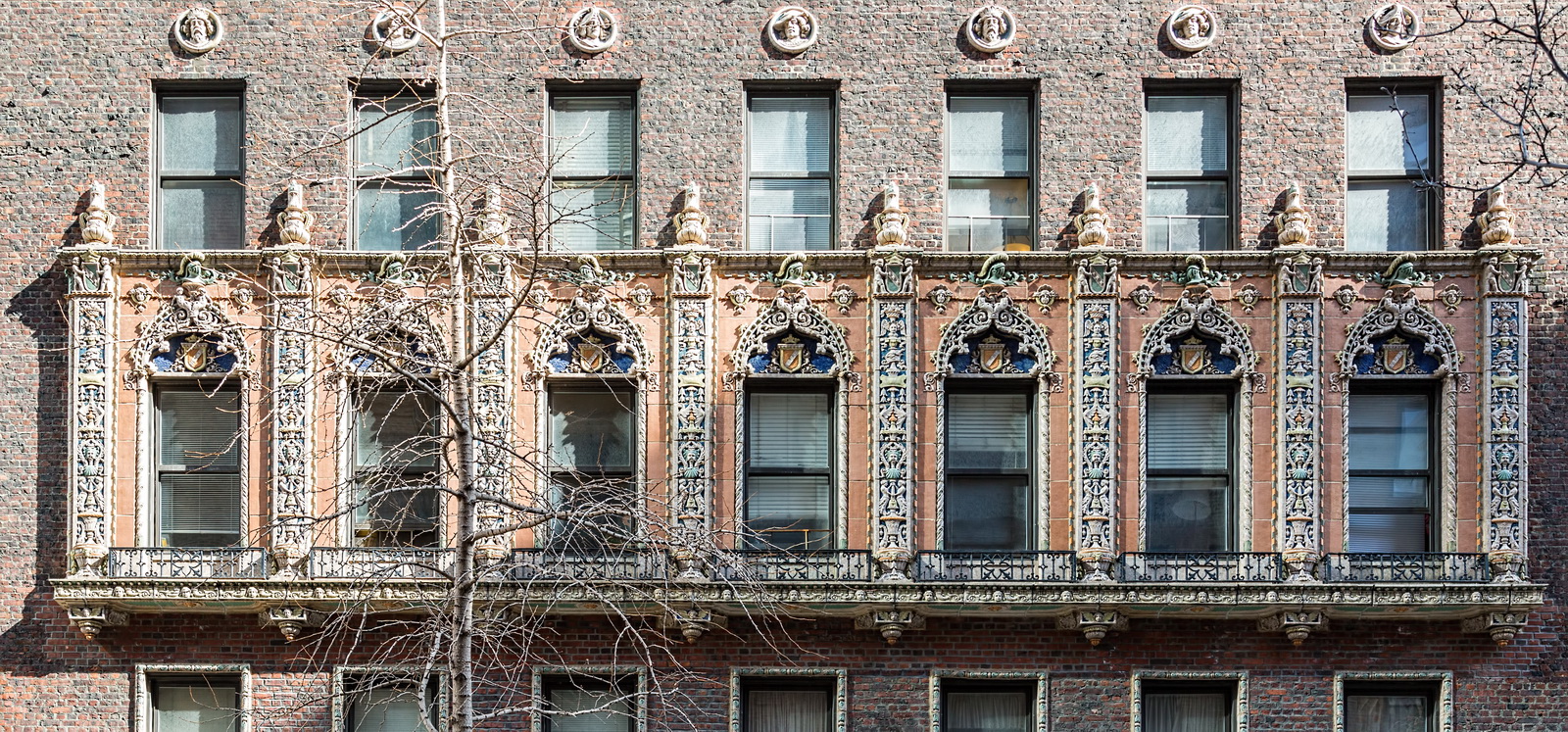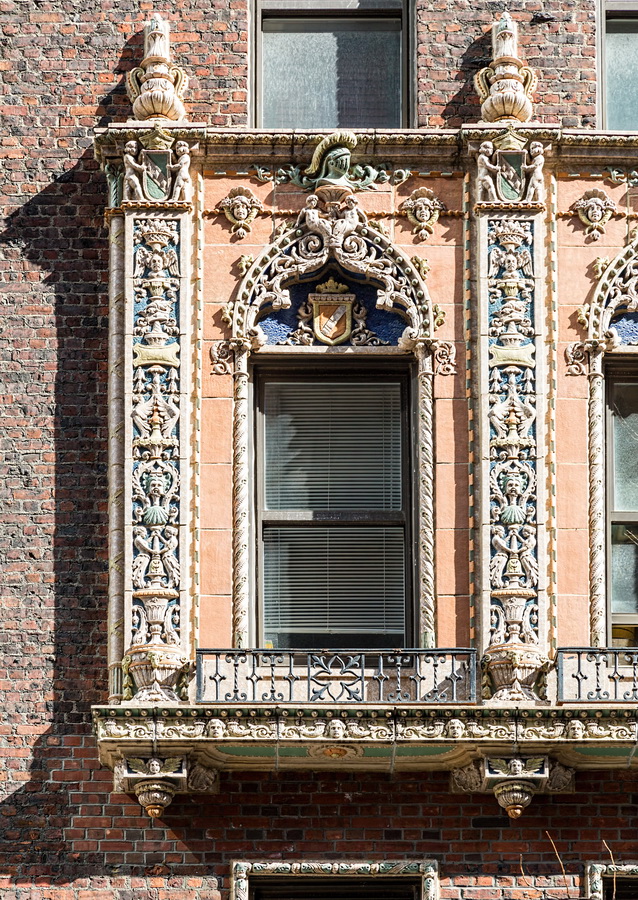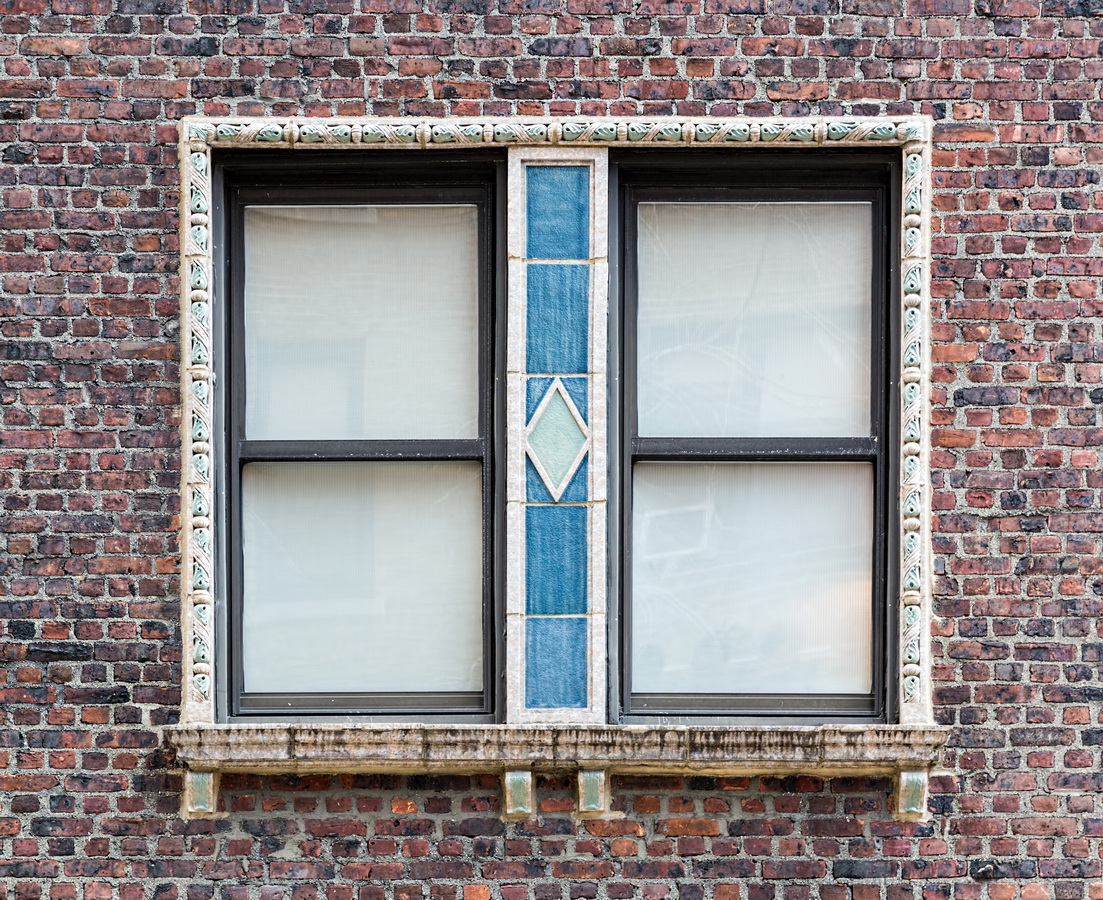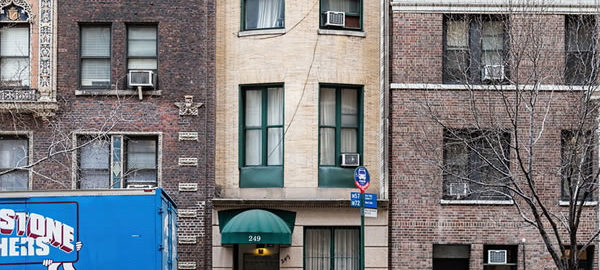Gramercy House is one of New York’s most colorful apartment houses, designed by George and Edward Blum. The prolific architects designed at least 70 apartment buildings and 60 commercial structures in New York, but only three in the Art Deco style.*
Like most of the Blums’ apartment houses, Gramercy House is distinctive for its unusual brickwork and ample terra cotta – notably the bold geometric band above the first story. Even the rear light courts (viewed from E 23rd Street) have broad blue terra cotta bands. The corners of the E 22nd Street facade have bricks set at an angle, and setbacks in the upper floors have unusual inset chamfers. Contrasting brick bands break up the facades on E 22nd Street and Second Avenue.
* The other two are 210 E 68th Street (1929) and 315 E 68th Street (1930).
Gramercy House Vital Statistics
- Location: 235 E 22nd Street at Second Avenue
- Year completed: 1930
- Architect: George and Edward Blum
- Floors: 17
- Style: Art Deco
Gramercy House Recommended Reading
- The New York Times Streetscapes | George and Edward Blum | Crowning Achievements for Two Brother-Architects (March 2, 2008)
- City Realty profile
- Daytonian in Manhattan blog
- Street Easy NY listing (includes floor plans)
- Emporis database
- George & Edward Blum | Texture and Design in New York Apartment House Architecture (The Friends of Terra Cotta Press)





